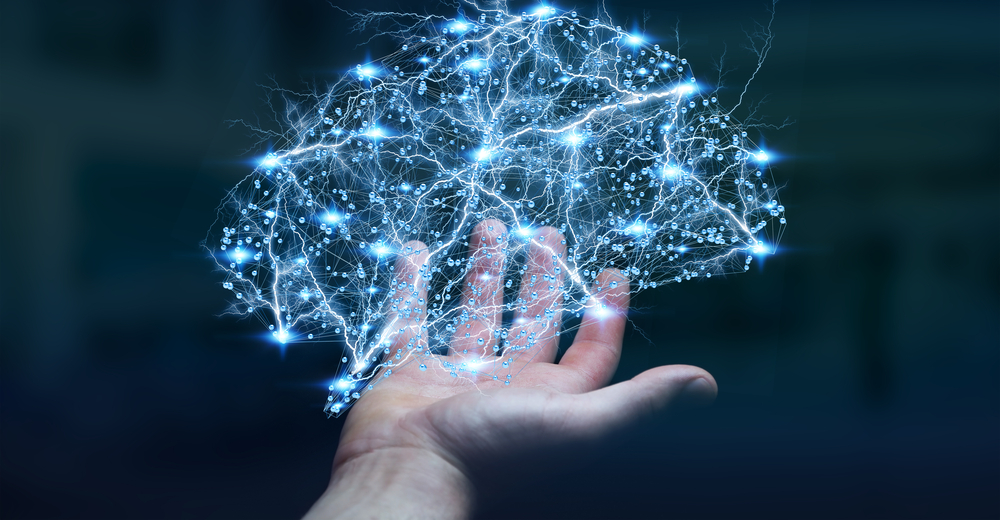Study confirms that adults can grow new brain cells – and they found the source

For most of modern history, we’ve been told a quiet lie about ourselves—that once we reach adulthood, our brains stop growing. That we are who we are, and from that point on, it’s just a slow fade. Memory slips. Creativity dulls. Emotional resilience wears thin. “You can’t teach an old dog new tricks,” they say, and most of us, at some point, start to believe it.
But what if that’s not the truth?
What if the brain—your brain—isn’t a finished structure, but a living, adapting force still building itself, even now?
For decades, scientists have debated whether adult humans could grow new neurons. It was accepted in animals, sure—but us? The evidence was fuzzy, the techniques limited, the conclusions uncertain. Until now. A landmark study has finally settled the debate, offering solid, scientific proof that adult human brains continue to produce new neurons—even into old age. This isn’t science fiction or wishful thinking. It’s biology. It’s fact.

A Decades-Long Debate Comes to a Groundbreaking Close
For more than sixty years, scientists have wrestled with a question that touches the core of how we understand the human mind: Does the adult brain continue to grow new neurons? While animal studies, particularly in rodents, had long confirmed the presence of neurogenesis—the creation of new neurons—in adulthood, evidence in humans remained murky and circumstantial. That uncertainty has now been decisively addressed. A landmark study published in Science has delivered compelling proof that adult human brains not only generate new neurons but also contain the precursor cells responsible for producing them, even in individuals as old as 78.
The research team, led by scientists at the Karolinska Institute, employed a sophisticated method that combined RNA sequencing and molecular fingerprinting to trace the full process of neurogenesis in the human hippocampus—a deep-brain region tied to memory and learning. By analyzing brain tissue from both children and adults, the scientists were able to identify a distinct set of molecular markers that characterize the life stages of neurons, from precursor cells to immature neurons. These markers acted like a biological time stamp, providing the clearest evidence yet that new neurons are not just developmental leftovers from childhood but are actively born in adulthood. Neural precursor cells, the root from which new neurons grow, were found in all the child brains studied and in 12 out of 19 adolescent and adult brains, painting a vivid picture of ongoing neurogenesis across the human lifespan.
Notably, two adult brains in the study exhibited particularly high levels of these neural precursors and immature neurons. One of those individuals had epilepsy—a detail that adds complexity, as some studies in mice suggest a link between increased neurogenesis and seizure activity. While the connection in humans remains uncertain, it hints at how dynamic and context-sensitive this process may be. What’s even more intriguing is the possibility that neurogenesis might not be limited to the hippocampus. In mice, for instance, new neurons are also generated in the olfactory bulb, raising the question of whether similar processes may occur in other parts of the human brain—a question the researchers intend to explore next.
This discovery does more than settle a scientific dispute; it changes how we view the adult brain itself. Rather than being fixed and slowly declining with age, the brain retains a remarkable capacity for growth and adaptation. As neuroscientist Gerd Kempermann, who was not involved in the study, put it, “Now we have very strong evidence that the whole process is there in humans, from the precursor cells to the immature neurons.” With this new clarity, researchers can finally shift from asking whether neurogenesis exists to investigating what roles these new neurons play in cognition, emotional health, and recovery from neurological diseases.
The Hippocampus—A Quiet Engine of Renewal
The discovery that adult human brains continue to generate new neurons centers around one small yet mighty structure: the hippocampus. Often described as the brain’s memory hub, the hippocampus is responsible for storing and processing experiences, emotions, and learned information. It’s also highly sensitive to stress and trauma—two factors known to influence mental health. For decades, this region has been the prime suspect in the search for adult neurogenesis, largely because earlier studies in rodents showed ongoing neuron formation in this area. The new research not only confirms that neurogenesis occurs in the adult human hippocampus but also identifies the very precursor cells that give rise to these new neurons—making it a confirmed site of lifelong brain renewal.
What makes this finding so important is not just that new neurons are forming, but that they’re forming in a region critical to memory and emotional regulation. This has profound implications for how we think about aging, resilience, and even mental illness. Past research in animals has suggested that neurogenesis in the hippocampus plays a key role in mood regulation, cognitive flexibility, and the ability to recover from psychological stress. In fact, some scientists have proposed that impaired neurogenesis could be a contributing factor in disorders such as depression and Alzheimer’s disease. While that connection remains under investigation in humans, the confirmation that neurogenesis does occur in adult hippocampi gives researchers a critical foothold in exploring how these new cells might influence brain function and mental health over time.
One fascinating insight from the study is how the presence of neurogenesis varies among individuals. While all child brains examined had abundant precursor cells and immature neurons, only 12 of the 19 adolescent and adult brains showed clear signs of the process. This variation raises important questions: What determines the brain’s capacity to continue generating neurons? Could lifestyle, environment, genetics, or health conditions influence this ability? One adult in the study with unusually high levels of neurogenesis had epilepsy, echoing findings in mice that suggest a link between heightened neurogenesis and seizure activity. While the implications for humans remain unclear, these differences suggest that neurogenesis is not a static, uniform process—it may be shaped by the unique circumstances of each individual’s life.
Ultimately, understanding neurogenesis in the hippocampus isn’t just about resolving scientific curiosity—it’s about unlocking the potential for human growth, healing, and transformation. If we can learn what nurtures or disrupts this process, we may discover new paths to support memory, emotional well-being, and cognitive vitality across the lifespan.

Rethinking the Aging Brain
One of the most transformative aspects of this discovery is how it challenges long-held beliefs about aging. For much of modern history, the adult brain was thought to be largely static—a slowly declining organ that peaked in youth and lost plasticity over time. This view painted aging as a one-way path of degeneration, with memory loss, cognitive decline, and emotional instability seen as inevitable milestones. But the confirmation of adult neurogenesis disrupts that narrative. It shows that even in later life, the brain is not only capable of change but actively engaged in renewal. Neurons are being born, connections are still forming, and under the right conditions, growth remains possible.
This opens a radically hopeful perspective: aging doesn’t have to mean decline—it can also mean adaptation. Researchers found immature neurons in adult brains up to age 78, a finding that suggests the potential for plasticity and regeneration lasts far longer than previously believed. While the rate of neurogenesis likely decreases with age, its continued presence implies that the brain retains the tools to reshape itself well into old age. This adaptability may help explain why some individuals maintain sharp cognitive function and emotional resilience deep into their later years, while others experience more rapid decline. It invites us to consider how lifestyle factors—such as physical activity, social connection, intellectual stimulation, and even sleep—might nourish the brain’s regenerative capacity.

Importantly, the hippocampus is especially sensitive to stress and trauma, both of which can suppress neurogenesis. This means our environments and experiences play a powerful role in shaping the brain’s ability to renew itself. Chronic stress, depression, and social isolation have all been linked to reduced neurogenesis in animal studies, and likely affect human brains in similar ways. On the other hand, activities like exercise, meditation, learning new skills, and even meaningful interpersonal relationships have been shown to support brain health and possibly enhance the birth of new neurons. So, rather than being passive observers of brain aging, we may have more agency than we realize in influencing how our minds grow and change over time.
The realization that adult brains are dynamic rather than fixed reframes what it means to grow older. It shifts our focus from preservation to participation—from simply trying to “hold on” to what we had, to actively cultivating what we can still become. Science is showing us what many ancient wisdom traditions have long taught: growth is not a phase of life, it’s a principle of life. And as long as we are alive, our brains remain—quietly, powerfully—capable of growing with us.
A Closer Look at the Breakthrough Evidence
What sets this study apart from earlier attempts to prove adult neurogenesis is the precision of its methods. Rather than relying on indirect observations or limited tissue samples, the researchers applied advanced molecular tools to build a detailed, step-by-step picture of how new neurons emerge in the human brain. At the heart of their process was single-cell RNA sequencing—a technique that allowed scientists to read the genetic activity inside individual cells. By studying the hippocampi of both children and adults, they tracked how specific genes were switched on or off at different stages of cell development, revealing a clear timeline from precursor cell to immature neuron.
In the first phase, researchers analyzed the brains of six young children who had tragically passed away and whose organs had been donated to science. From over 100,000 brain cells, they identified distinctive molecular “fingerprints” that marked the different stages of neuron development. These weren’t vague signs—they were precise patterns of gene expression that showed a cell’s identity and age. Using this fingerprint as a reference, the scientists then examined 19 postmortem brains of individuals aged 13 to 78. Remarkably, they found the same molecular markers in almost all of them, confirming that immature neurons—and the precursor cells that produce them—are present throughout much of life.
The researchers took care not to rely on any single marker or assumption. Instead, they looked for multiple overlapping signs that, when found together, strongly indicated active neurogenesis. This multi-layered approach helped eliminate doubt and avoid false positives—something that had plagued earlier studies. The fact that they discovered both the “seed” cells (neural precursors) and the resulting “sprouts” (immature neurons) in most adult brains made the case even stronger. One adult brain did not show evidence of these cells, but the vast majority did—offering robust support for the idea that the human brain, like that of many animals, continues to produce new neurons well after childhood.

This wasn’t just a clever lab experiment—it was a clear answer to a long-standing biological question. With the tools of modern genetics and painstaking analysis, the researchers didn’t just find isolated cells; they uncovered a continuous and traceable process of cell birth and development. It is this rigorous, step-by-step mapping of neurogenesis in real human tissue that finally shifts the conversation from speculation to certainty.
One Discovery, Many New Questions
While the evidence for adult neurogenesis is now stronger than ever, the discovery opens the door to a host of new and unanswered questions—questions that challenge us to think more deeply about how the brain works, and what this means for human potential. For one, if neurogenesis persists into later life, why does it seem to vary so widely between individuals? In the study, while most adult brains showed signs of new neurons, some had many more than others. One adult, for example, had an unusually high number of precursor cells and immature neurons, and also happened to have lived with epilepsy. Does this suggest that certain neurological conditions influence neurogenesis—or that neurogenesis itself might play a role in how the brain responds to those conditions?
There’s also the matter of location. So far, the hippocampus is the only region in the adult human brain where neurogenesis has been clearly documented. But in mice and other animals, new neurons are also born in areas like the olfactory bulb. Could the same be true for humans, and we just haven’t looked closely enough? One of the researchers, Marta Paterlini, has expressed interest in exploring this very possibility. If confirmed, it could mean that adult neurogenesis is not a rare exception but a broader, more flexible feature of the brain’s biology—an engine of adaptability working behind the scenes across multiple functions.
Then comes the question of what, exactly, these new neurons do. Are they involved in memory formation, emotional resilience, learning, or recovery from injury? Do they integrate into existing brain circuits, or do they serve more specialized roles? For decades, scientists couldn’t even agree on whether these cells existed—so their purpose remained mostly speculative. But now that their presence is confirmed, the next step is understanding their function. As neuroscientist Gerd Kempermann put it, now is the time to move beyond the “if” and focus on the “how”—how these cells shape the brain’s response to experience, and what this means for us as thinking, feeling, learning beings.
This discovery, then, isn’t the end of a conversation—it’s the beginning of a deeper one. The adult brain is no longer a finished product. It is living, changing, and—perhaps more than we knew—capable of reinvention. And if the brain can keep renewing itself, the real question becomes: what might we be capable of renewing in our own lives?
Loading...

